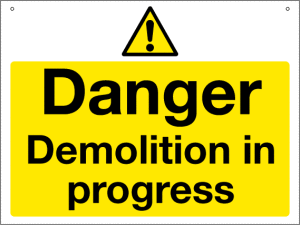 Bob Borson over at Lifeofanarchitect.com recently wrote an excellent post about the benefits of Deconstruction versus Demolition. In it he talks about the environmental and financial benefits of deconstruction instead of demolition.
Bob Borson over at Lifeofanarchitect.com recently wrote an excellent post about the benefits of Deconstruction versus Demolition. In it he talks about the environmental and financial benefits of deconstruction instead of demolition.
The post can be boiled down to the following:
- demolition is quick
- demolition puts everything into the landfill
- deconstruction takes longer
- deconstruction salvages materials and fixtures, lessening the amount sent to landfill
- the salvaged materials and fixtures can be donated for a tax deduction
- not discussed in the post, but also true, the salvaged materials and fixtures can be sold for cash.
Selling the salvage may not bring in as much money, depending on the age and condition of the salvage, but it is easier than jumping through the IRS/appraisal hoops required to get the tax deduction. In the Bay Area there is a competitive market for salvaged materials for use in restoration, remodeling and new construction.
I would note that in many Bay Area jurisdictions the word “demolition” is reserved for razing a building to the ground. In those jurisdictions, “removal” is the word you have to use on your permit application if you are just taking out walls, windows, fixtures and so on and not tearing the building down. But how you do the removal and whether or not anything is salvaged is entirely up to the needs of the project.
The environmental benefits, maximizing reuse and recycling of existing materials, is the most significant aspect of deconstruction for me. The financial benefits to the owner of a tax deduction or cash in hand are not insignificant, either. In some cases, if the building is feature rich (old growth flooring, architectural mill work, etc.), some “demolition contractors” will do the deconstruction for free or a reduced cost because they will turn around and sell the salvage themselves. This only applies to a small fraction of remodeling projects, however. The material being removed has to be exceptional – in which case, why are you removing it and not reusing it?





